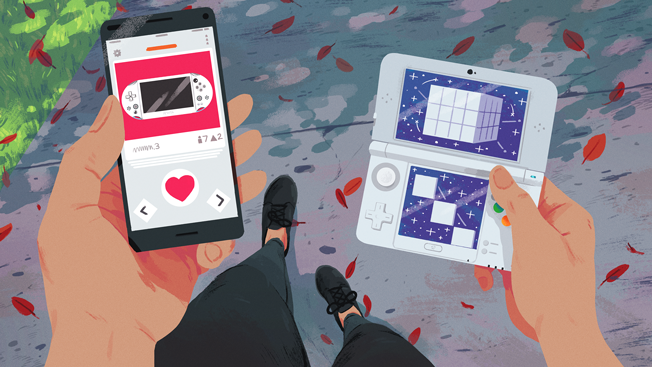Dedicated gamers are a tough demo to crack, and when it comes to advertising, they have little patience for ads that interrupt their experience. After all, they are there to play—not wait out 30-second ads every 10 minutes.
However, gaming companies like Activision, Blizzard and Bethesda Softworks are changing this dynamic through their willingness to experiment with new advertising channels such as Tinder and Snapchat in creative ways, leading to more integrated and effective campaigns. Digital marketers across all industries stand to learn a thing or two from the way these companies are reaching gamers across channels.
Marry your advertising channels (literally)
In an effort to promote its recently released mobile game, “Fallout Shelter,” Maryland-based game developer and publisher Bethesda Softworks tested two branded profiles on popular dating app Tinder to kick off its #DateADweller campaign. Users logging in for their daily dose of swiping were greeted with profiles for Vault Boy and Vault Girl, two cartoon characters frequently referenced throughout the Fallout series. Both had common profile descriptions—name, age, likes, favorite quotes—and Vault Girl’s profile even suggested same-sex relationships. Those that swiped right on either were sent a link to download the game.
Bethesda didn’t stop there, though. It flooded Twitter with the associated hashtag #DateADweller via the official Fallout page, which boasts nearly half a million followers. Fans were quick to catch on and play along with the promotion’s jeer at love, even going so far as to nominate characters from the console-based games in the series as eligible bachelors and bachelorettes.
The effort paid off. “Fallout Shelter,” which is free to play, ended up grossing $5.1 million through in-app purchases during its first two weeks in the App Store. With these kinds of results, Bethesda showed how experiments on the frontiers of new media can yield unexpected success. Tinder might have an estimated 50 million active users—10 million of them using the app daily—and plenty of advertising interest, but for most marketers it’s still new territory.
Cross-game marketing inception
Blizzard, the developer and publisher behind acclaimed franchises including “World of Warcraft” and “Starcraft”, has had similar success with playfully inventive cross-platform marketing, but in a very different way. Advances in gaming technology have made integrating in-game offers a breeze, so instead of using external apps to market its titles, the company is using internal game data to promote less popular games through its more established franchises. For example, if a player reaches rank 20 in the game “Hearthstone,” he or she receives free items in “World of Warcraft.”
Blizzard’s cross-game advertising is part of a larger push to promote the brand as a one-stop shop for dedicated gamers. By leveraging an integrated distribution platform, Blizzard has been able to effectively market all of its titles through its own products. And the strategy seems to be working: According to a recently released report, the brand hit revenues of over $1 billion in the second quarter of 2015, a 16-percent jump from the same time last year.
Shooting for social engagement
While most brands could make better use of their own distribution streams, this can be done even more effectively as part of a cross-channel push. “Call of Duty” publisher Activision, for example, did exactly this on one of today’s most popular social platforms.
This past April, “Call of Duty: Black Ops 2” players were treated to a mysterious game update. A Snapchat ghost-shaped QR code began showing up in multiple levels. Scanning the code automatically connected players with the “Call of Duty” Snapchat account, and sent them a snap teasing the upcoming title in the series, “Call of Duty: Black Ops 3.” On the first day of the update’s release, the “Call of Duty” account was gaining two followers per second. Within a month, it had over 250,000.
With this stint, Activision effectively combined the distribution advantage of cross-game promotion with the reach of a social media channel such as Snapchat. Similar to Blizzard, the product was the promotion vehicle, achieving a level of integration that enriched the player’s experience instead of interrupting it. What’s more, by scanning the code, the player opened himself up to a consistent line of communication with the “Call of Duty” brand.
Bethesda united its advertising across social channels to create a cash cow out of a game that wasn’t supposed to make money in the first place. Blizzard capitalized on its vast player network to promote the brand over individual titles and ultimately increased brand revenue. Activision married these two techniques to reach a massive amount of potential customers, encouraging long-term gamer-brand relationships along the way. These campaigns are a testament to the way gaming companies are spearheading the push towards more sophisticated and integrated digital advertising. As consumers continue to engage with more and more channels, marketers and brands should be looking to create similarly seamless experiences that enrich instead of interrupt the customer journey across touch points.









